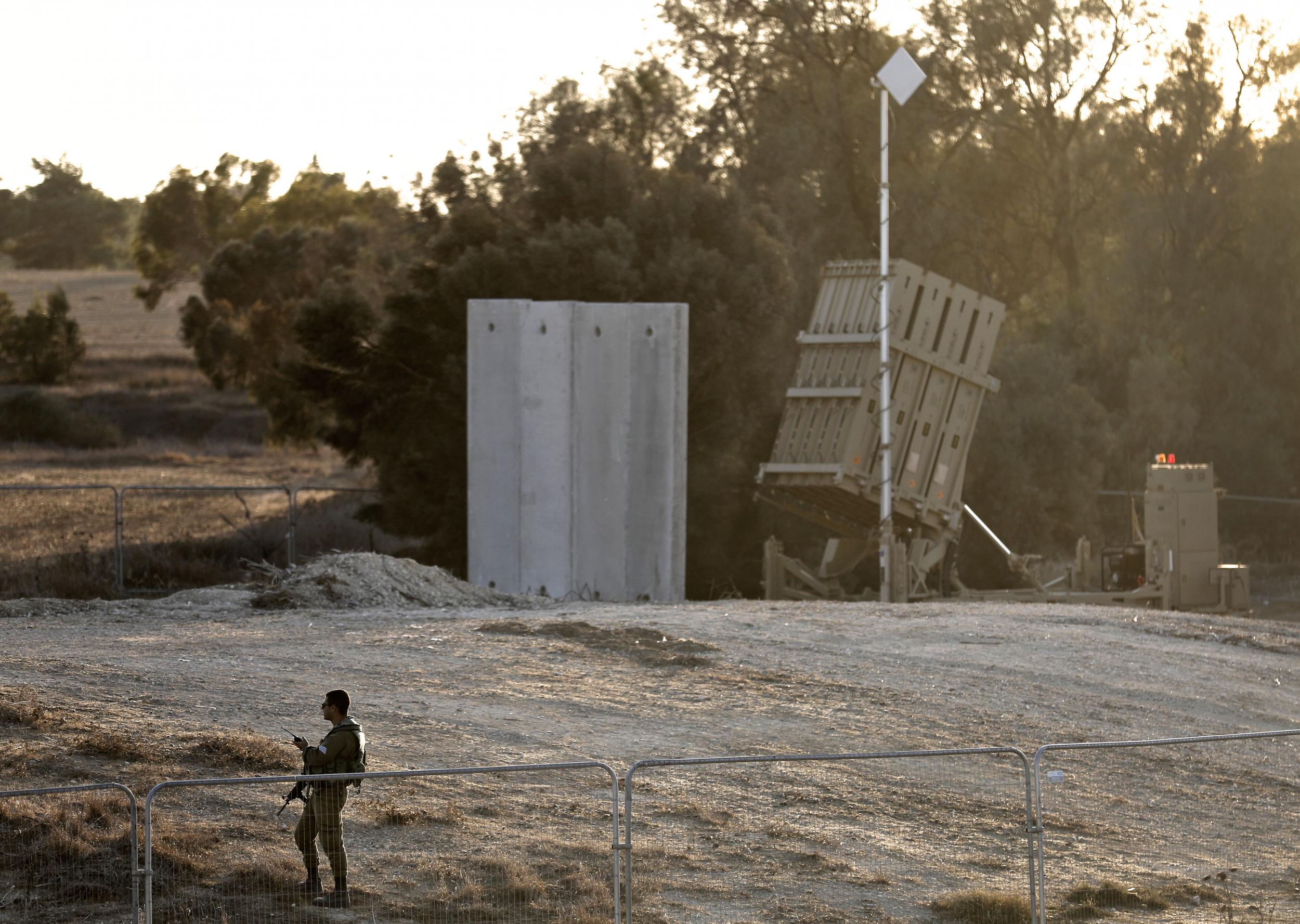Gaza tunnels air strike: Israel-Palestinian tensions at highest since 2014 war
Rare Israeli operation destroying border tunnel killing seven militants labelled ‘a new war against the Gaza people’ by Hamas

Your support helps us to tell the story
From reproductive rights to climate change to Big Tech, The Independent is on the ground when the story is developing. Whether it's investigating the financials of Elon Musk's pro-Trump PAC or producing our latest documentary, 'The A Word', which shines a light on the American women fighting for reproductive rights, we know how important it is to parse out the facts from the messaging.
At such a critical moment in US history, we need reporters on the ground. Your donation allows us to keep sending journalists to speak to both sides of the story.
The Independent is trusted by Americans across the entire political spectrum. And unlike many other quality news outlets, we choose not to lock Americans out of our reporting and analysis with paywalls. We believe quality journalism should be available to everyone, paid for by those who can afford it.
Your support makes all the difference.Palestinian militant groups have vowed to respond to an Israeli attack on a militant tunnel that killed seven people and injured nine more in the most dramatic ratcheting of tensions between the Gaza Strip and Israel since 2014’s Operation Protective Edge.
The Israel Defence Forces (IDF) said that Monday night’s rare strikes near the border, which has remained tense but quiet since the last war, had targeted an “active tunnel” which had reached Israeli territory.
It is believed to have been operated by the Islamic Jihad Movement, five members of which were among those killed and injured in the tunnel's destruction, according to Gaza’s health ministry. The two others who died were part of Hamas’ Izz Eddine al-Qassam Brigades. At least one senior commander is believed to be among the dead.
“We affirm our right to respond to the aggression of the occupation today,” the Islamic Jihad Movement said in a statement overnight.
Hamas, the militant organisation which rules the Strip, said in a Twitter post that the attack constitutes a “a new war against Gaza people“.
Egyptian mediators are reported to be working to calm the situation, but Israel is on high alert in case of a retaliatory attack.
While the IDF did not elaborate on how the tunnel was destroyed, Palestinian news agency Wafa reported five missiles hit the tunnel east of the town of Khan Younis.
Israeli military spokesperson Ronen Manelis said that the tunnel, which had reached Israeli territory, had been under surveillance for some time and was destroyed in a defensive operation inside Israel.
He added that the strike had not intended to cause fatalities, and most of those killed had died because of smoke inhalation when they tried to enter the tunnel to rescue people after the attack.
In the last round of fighting in 2014, Hamas used a large tunnel network to try and facilitate attacks on Israel, although none of the incursions managed to reach civilian areas.
Destroying the underground system has since become a top priority for the IDF.
“Those who try to harm us, we harm them,” Israeli Prime Minister Benjamin Netanyahu said in a statement, praising the state-of-the-art technology being used to target tunnels. “Today we detected a tunnel and destroyed it and we will continue to do so.”
The Palestinian Authority’s Fatah, in the West Bank, called for a dialogue with its Gaza rivals to discuss responses to the Israeli strike.
The two parties announced earlier this month they had struck a reconciliation deal creating a unity government to once again administer both the West Bank and Gaza after the rift caused by Hamas’s takeover of the Gaza Strip in 2007.
As such, the timing of the strike may put pressure on the agreement, widely viewed as the biggest step forward for internal Palestinian relations in a decade.
The coastal enclave has since been subject to both an Israeli blockade and Fatah strangulation of electricity and other resources, crippling its economy and leaving much of the territory’s population of 1.8 million dependent on aid.
Join our commenting forum
Join thought-provoking conversations, follow other Independent readers and see their replies
Comments